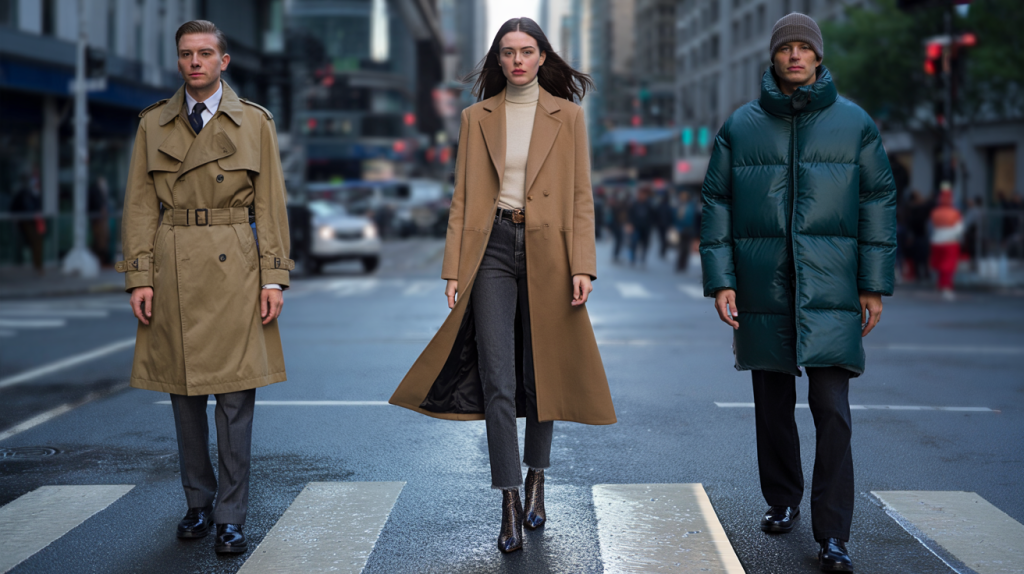Hunting the manteau phare de la saison? Here is the data, the fabrics and the smart checks that separate a fleeting trend from a coat you will wear for years.
One glance at street style this week and the message lands fast. A clean wool coat, a sharp trench or an elevated puffer takes over every look, turning simple jeans or a knit into something pulled together. That is the power of the season’s statement piece, the manteau phare de la saison, the one coat that anchors a wardrobe right now.
Timing explains the rush. Google Trends data from 2019 to 2024 shows searches for “wool coat” and “trench coat” spiking from October to December, then easing in late winter. The desire is seasonal, the impact is daily. Choose well and the coat does the heavy lifting from Monday to Sunday, office to off-duty, without shouting.
The manteau phare de la saison, decoded
At the beginning of each cold season, three families tend to lead. A tailored wool coat that sharpens any silhouette. A classic trench that handles wet commutes and reads quietly luxurious. A technical puffer that keeps warmth without bulk when temperatures drop.
There is history behind the appeal. Thomas Burberry patented gabardine in 1888, the tightly woven fabric that later defined weatherproof trench coats used in World War I from 1914 to 1918. That lineage still signals reliability today, which is why a trench keeps returning in city wardrobes.
Practical needs nudge style choices too. Commuters want warmth that breathes on packed trains. Weekend plans call for ease. The hero coat of the season bridges those realities instead of living only on runways.
Trends with proof: searches, heritage and impact
Search behavior backs the obsession. On Google Trends, “wool coat” peaks in the last quarter of the year across major markets, while “puffer jacket” rises again when the first cold wave hits. That five year pattern helps explain why retailers front-load outerwear drops in early autumn.
Longevity matters. A well made wool coat can stay in rotation for years with simple upkeep, a point that aligns with environmental pressures on fashion. The United Nations Environment Programme reports the fashion sector accounts for an estimated 2 to 8 percent of global carbon emissions. Buying fewer, better outerwear pieces fits the shift toward durability.
Cost per wear changes the math. Spread a higher ticket coat across 120 winter days and then across multiple seasons. The daily number shrinks fast when tailoring, fabric and comfort keep you reaching for the same piece.
How to choose your statement coat without guesswork
Start with climate and lifestyle. If the week involves rain and meetings, a trench with a detachable liner earns its place. If winters bite, choose insulated but sleek, ideally with recycled fill and a water repellent shell. City walkers often favor dense, double faced wool that blocks wind without feeling heavy.
Fit decides whether a coat looks intentional. Shoulders should sit clean. Sleeves meet the wrist bone. A belt that cinches without bunching, lapels that lie flat, buttons that stay buttonned. Try it over a blazer and a chunky knit to test room for layering.
Fabric tells the truth. Merino, cashmere blends or sturdy recycled polyester behave differently than flimsy synthetics. Check lining quality and stitch density. For trench lovers, gabardine cotton or a bonded cotton keeps shape and resists rain better than thin twill.
If a quick checklist helps, save this one and take it to the fitting room.
- Silhouette : straight, tailored or cocoon, chosen to match what you wear most.
- Fabric : dense wool, gabardine cotton or recycled technical shell with credible certifications.
- Length : knee or mid calf for everyday, cropped for commuters on bikes.
- Color : camel, navy, black or an earth tone that pairs with 80 percent of your closet.
- Details : sturdy buttons, secure pockets, removable belt, hidden storm placket, easy to reline or repair.
Price, care and a smarter winter move
Set a budget with care costs included. A wool coat may need a professional clean once or twice per season, plus a fabric shaver and a clothes brush. A trench benefits from occasional reproofing. Technical coats appreciate a gentle wash cycle that preserves water repellency.
Look for repairability. Tailors can replace linings and buttons, reinforce hems and refresh shoulder pads. That extends life far beyond one trend window. Consider resale value as well. Classic colors and recognizable fabrics keep liquidity on platforms if you later trade up.
One last filter ties it all together. Wear the coat for five minutes indoors, then step outside. Does the collar shield your neck, do pockets warm hands, does the fabric move with you. When a piece passes those small tests and answers to your weather and calendar, that is the manteau phare de la saison doing its job, day after day.
